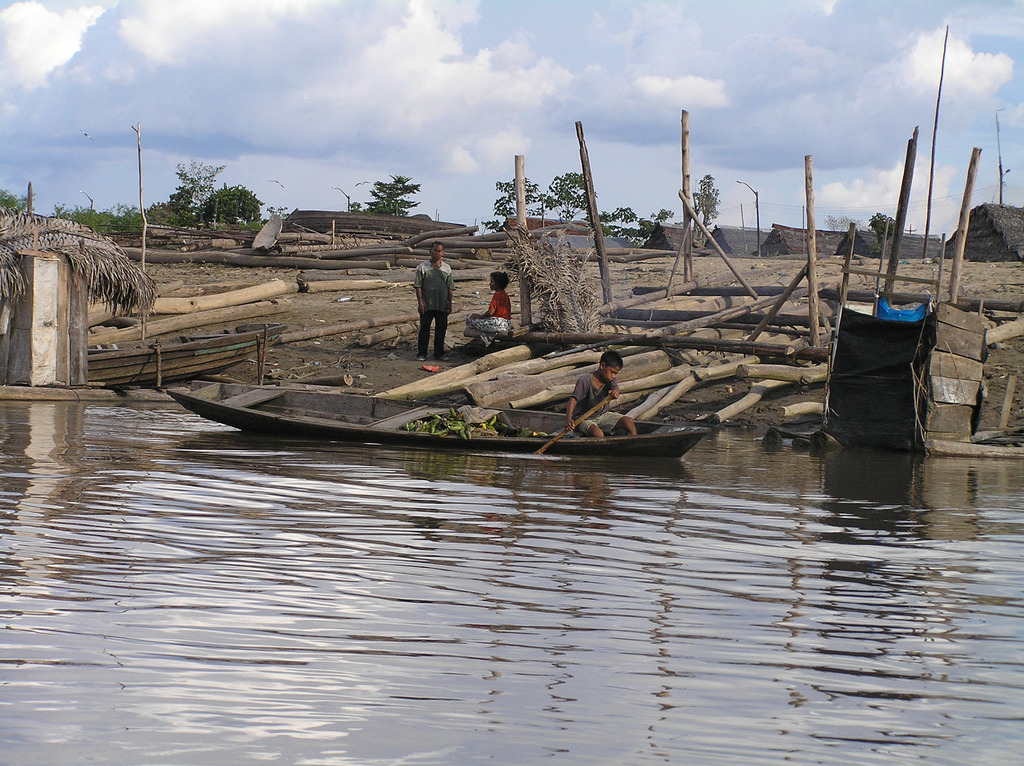V 05 |
Raft and pile houses of Belén |
type |
|
place |
|
population |
Iquitos, in Peru holds a world record – it is the largest town in the world which cannot be reached by road. While there are two airfields almost all transport, commerce and all aspects of life are conducted on water. It is quite normal for more than 50 types of native fish and water creatures to be on sale at the market in Iquitos.
Most of the city of half a million avoids the floods, but the 14000 residents of the Belén (Bethlehem) district have built their houses on the floodplain, so they have to adapt, in their own special ways, to the 5-6 metre fluctuations in the height of the river Itaya. In the relatively higher areas of Belén, where the water is only 3 metres deep when the river floods, the people simply put their houses on stilts, although even so they sometimes have to move upstairs to the first floor. In lower lying areas this is not enough, so the houses there are built on rafts made of balsawood logs. Piles are driven into the riverbed on each side of the raft to anchor the structure so it does not drift away with the floods.
The 5-8 metre wide, 6-10 metre long wooden framed, pitched roofed buildings thatched with palm leaves are inhabited by 2-5 families. Nowadays traditional building materials are mixed with newer technology, so as well as wooden planks and boards, corrugated metal is used, and the walls are painted in bright colours in line with a modern trend. Inside there has been less modernization than the people would like: there is no electricity in the houses, water supply, sewage and waste disposal amenities are also absent, so all bodily waste goes straight into the river, causing serious problems with infectious diseases.
Every member of the family has a canoe or motor boat in which they travel, trade and deliver goods. Children here spend more of their time rowing or bathing than studying, so it is no surprise that 70% of the population is illiterate.






